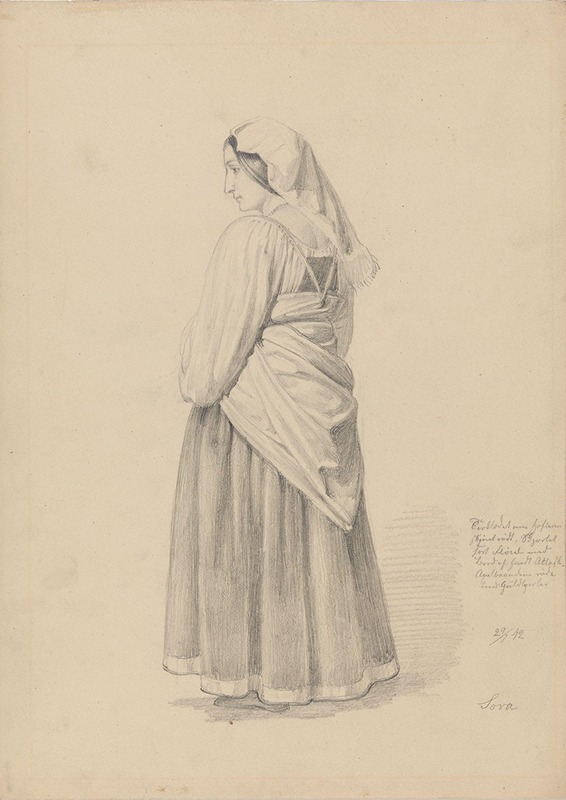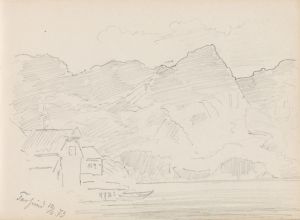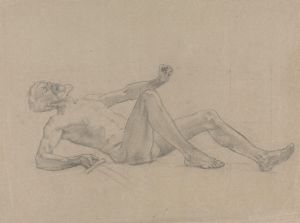
Stående italienerinne
A hand-painted replica of Adolph Tidemand’s masterpiece Stående italienerinne, meticulously crafted by professional artists to capture the true essence of the original. Each piece is created with museum-quality canvas and rare mineral pigments, carefully painted by experienced artists with delicate brushstrokes and rich, layered colors to perfectly recreate the texture of the original artwork. Unlike machine-printed reproductions, this hand-painted version brings the painting to life, infused with the artist’s emotions and skill in every stroke. Whether for personal collection or home decoration, it instantly elevates the artistic atmosphere of any space.
Adolph Tidemand, a prominent Norwegian painter of the 19th century, is best known for his depictions of Norwegian folk life and traditions. However, his painting Stående italienerinne (translated as Standing Italian Woman) represents a departure from his usual focus on Norwegian themes. This artwork reflects Tidemand's interest in portraying figures from other cultures, a common practice among European artists of the Romantic period who sought inspiration from travels and encounters with different traditions.
Stående italienerinne features a standing Italian woman, dressed in traditional attire. The painting is characterized by Tidemand's meticulous attention to detail, particularly in the rendering of the woman's clothing and posture. The subject's attire, likely inspired by regional Italian folk costumes, is depicted with vibrant colors and intricate patterns, showcasing Tidemand's skill in capturing texture and fabric. The woman's pose is dignified, and her expression conveys a sense of quiet strength, aligning with the Romantic idealization of rural and traditional lifestyles.
The painting was likely created during or after Tidemand's travels in Europe, which included time spent in Italy. Like many artists of his era, Tidemand was influenced by the cultural and artistic heritage of Italy, which was considered a vital destination for artists seeking to refine their craft and broaden their perspectives. His time in Italy exposed him to the country's rich traditions, landscapes, and people, which may have inspired works such as Stående italienerinne.
While Stående italienerinne is not as widely recognized as some of Tidemand's other works, it remains an example of his ability to adapt his artistic style to different cultural contexts. The painting reflects the Romantic era's fascination with the "exotic" and the idealization of rural life, themes that resonated with audiences across Europe during the 19th century.
The current location of Stående italienerinne is not widely documented, and detailed information about the painting's provenance or reception is limited. However, it contributes to the broader understanding of Adolph Tidemand's oeuvre and his engagement with subjects beyond his native Norway.


















